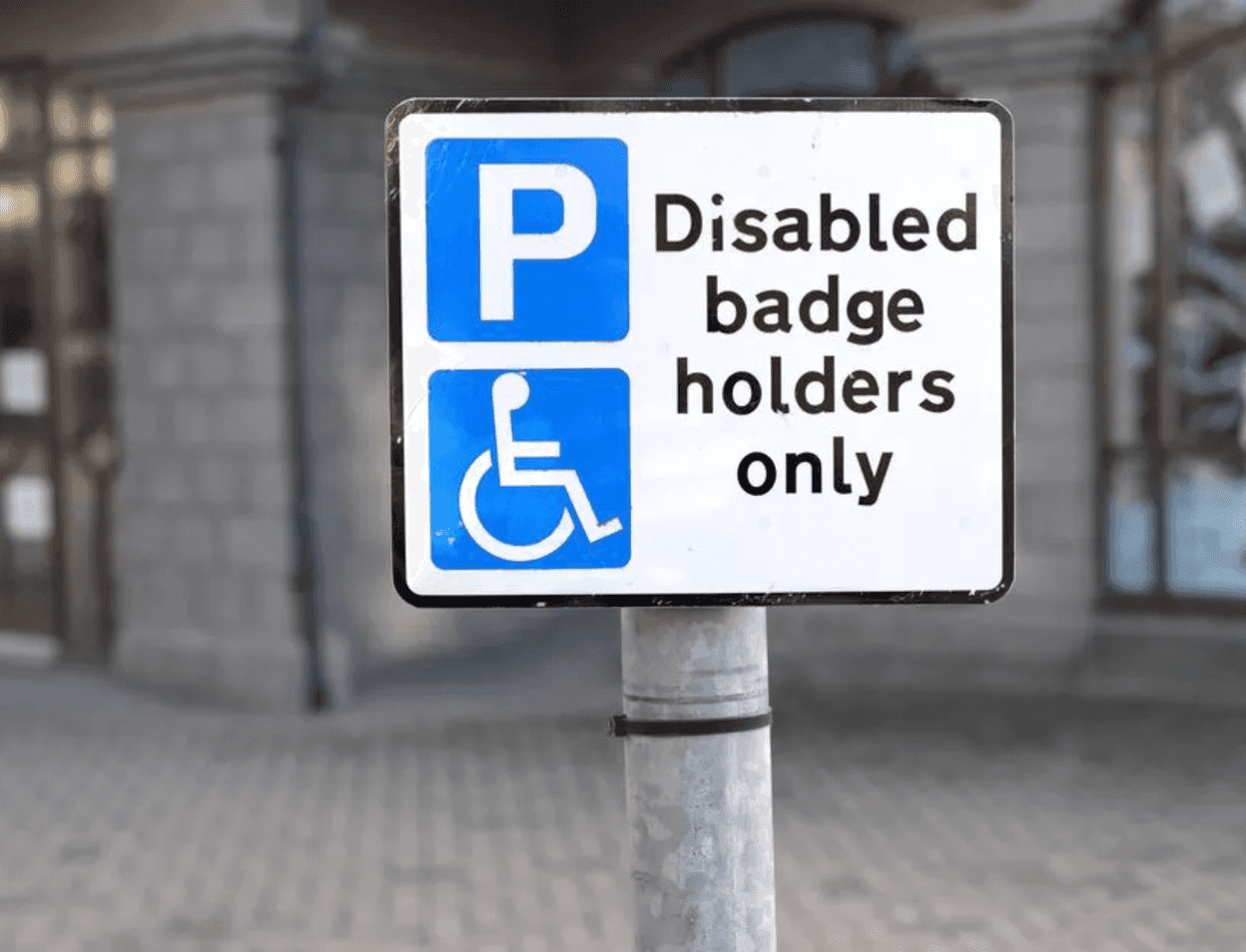
Understanding Blue Badge parking: How, where and when to use a pass for accessible parking
Mobility limitations affect millions of drivers across the UK — use this simple guide to learn more about what a Blue Badge is, how to apply for one and where it can be used.
Millions of people are affected by mobility restrictions each year across the UK, meaning the need for accessible and safe travel options are non-negotiable.
One of the schemes in place to assist with easier commuting in cities is Blue Badges. These allow drivers with accessibility needs to park closer to the places they’re visiting in order to make journeys easier and safer, but there are a number of different restrictions and application processes, depending on where you are in the UK. To avoid confusion or even possible fines for misuse, follow this useful guide to ensure all your travels run as smoothly as possible.
What is a Blue Badge?
Used to aid people with disabilities where mobility is limited, a Blue Badge is a parking permit issued by your local authority. It can assist with on-street parking, and allows parking on single or double yellow lines in certain situations for up to three hours. Private car parks will have different rules as the owner decides on the restrictions, however there are a multitude of clearly labelled accessible spaces available through JustPark. While a useful permit, it is important to follow the rules about who can use your Blue Badge, as it is a criminal offence to give it to someone who doesn’t need it, or misuse your badge.
There may also be additional allowances in some instances for Blue Badge holders, such as exemptions from paying road tax, toll concessions and TfL discounts.
Who can get a Blue Badge?
In some cases, people can automatically qualify for a Blue Badge from the government. For example, those who are registered blind, or receive a higher rate of the mobility component of the Disability Living Allowance.
When preparing to apply for a Blue Badge parking permit, you can cite any of the below reasons
you cannot walk, have difficulties walking or require mobility aids
you have disabilities in both arms meaning it is challenging to use pay-and-display machines
you become extremely anxious in open, public spaces
you have difficulty controlling your actions or impulses and may put others at risk in heavy traffic or busy car parks
you struggle severely to plan or follow a journey
There are many other reasons to apply, so it’s important to check your local council’s requirements on eligibility. You must note however, that proof of eligibility is necessary, so you need to be able to provide details of treatment, or documents from healthcare professionals.
If you are the parent or carer of a child over three with mobility issues, you can also apply for a Blue Badge on their behalf, using their child reference number.
How do you apply for a Blue Badge?
Blue Badge applications are handled by each local council independently, however you can apply via the government website or in some cases you may be able to file a paper submission. You’ll need to provide a number of documents such as a passport photo, proof of benefits, proof of identity and address, and your National Insurance Number. The process can take up to 12 weeks, and while you can be denied, you can ask your council to review your application if you feel their assessment was unfair.
In England, all councils charge £10 for your first and renewal applications, whereas in Scotland it is £20, and free in Wales. If you’re applying in Northern Ireland, there is a different system to follow.
If you’d prefer to speak to someone on the phone about assisting you in your application, most councils will have a dedicated phone number on their Blue Badge pages to help connect you with the appropriate person.
How do you use a Blue Badge?
Once you have been assigned a Blue Badge, you can begin to use it either as the driver or passenger in any vehicle you’re in (including car hires).
When you need to park, look for parking spaces designated for disabled parking. These spaces are usually located closer to the entrances of facilities, making it easier to access and cutting down the travel distance. Be sure to check the local parking rules as the availability and regulations may vary by location, and you can also consider booking parking in advance with specialist access through the JustPark app.
To ensure you don’t get fined for parking in Blue Badge exclusive spaces, it is vital you have your Blue Badge on display clearly visible on your dashboard. You also need to display your parking clock in certain areas, showing the time you arrived at the parking space so you don’t exceed any time restrictions.
In addition, you mustn't display the side with all your personal details and photo on it, as this is revealing all your information to the public and potential thieves. It is critical to make sure that you only use your Blue Badge appropriately by not giving it to friends or family, unless they’re driving you as a passenger, and only using it when leaving your vehicle, not just staying in it. Also, if you no longer require your Blue Badge it is important that you return it to the council rather than continuing to use it and receiving the benefits unjustly.
Where can you use a Blue Badge?
Having a Blue Badge allows you to park for free where there is on-street parking with either pay-and-display, or parking metres in place, usually for as long as possible. You can also park on double or single yellow lines for up to three hours, provided there is a “no loading” sign, ensuring your clock is displayed to avoid potential fines. This government tool can help you find out the restrictions on Blue Badge parking in your local area by simply inputting your postcode. However, having a Blue Badge doesn’t allow you to park anywhere as pedestrian zones, bus and cycle lanes, zigzag markings, and loading bays are still strictly out of bounds as parking areas.
If you’re visiting somewhere new and nervous about finding accessible options, organisations such as AccessAble have search tools to filter to your access needs.
Using a Blue Badge permit outside of the UK
A UK Blue Badge is still recognised as an accepted disabled parking permit in many EU countries, however it is still important to check rules and restrictions before you travel. Countries including Austria, Sweden, Germany, and Croatia allow you to use your UK Blue Badge in the country for accessible parking, with some requiring you to display a notice in the spoken language. Other countries have more restricted use of Blue Badges, with Italy, France and Slovenia having different rules based on local regions, so researching in advance is vital.
Having understood all this information about Blue Badges, you can apply for yourself, or on someone else’s behalf via the UK Government site; beginning your journey to safer, and more accessible parking.





